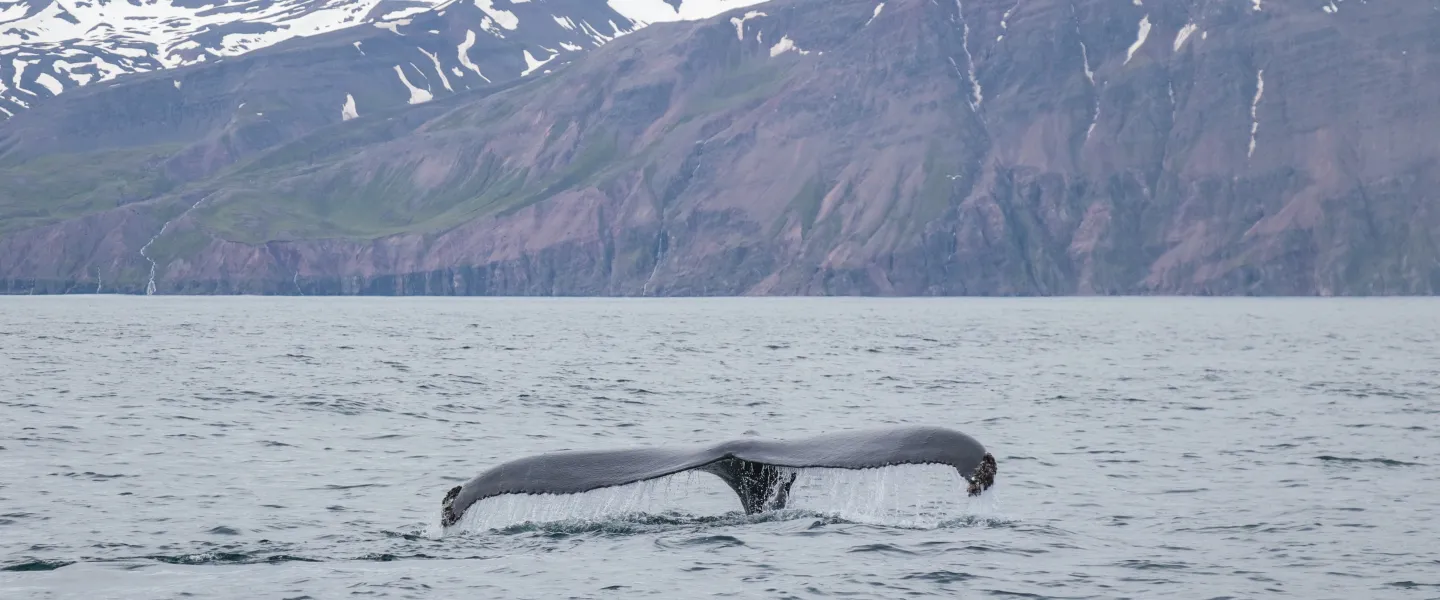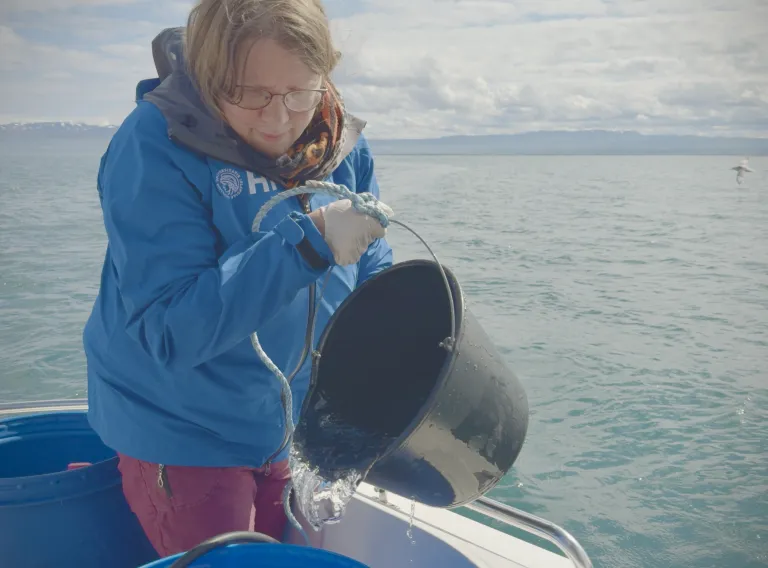
Research scientists at the University of Iceland’s Research Centre in Húsavík are currently developing an innovative approach in whale research based on environmental DNA or eDNA. The scientists collect samples from the ocean in places where humpback whales have dived just before.
They sail out to Skjálfandafljót either on a University of Iceland boat or with Whale Watching vessels from Húsavík to collect the samples.
The samples contain micro-organisms and DNA molecules left behind by the whales, for instance, from their skin, mucus, or faeces. The intention is thus to examine whether it will be possible to analyse complex factors from the resulting data, including the whale's life cycle and individual characteristics. The new method makes it possible to gather data without disturbing the whales in any way other than being near the area where they dived.

